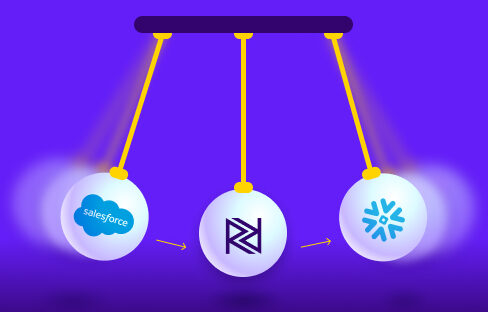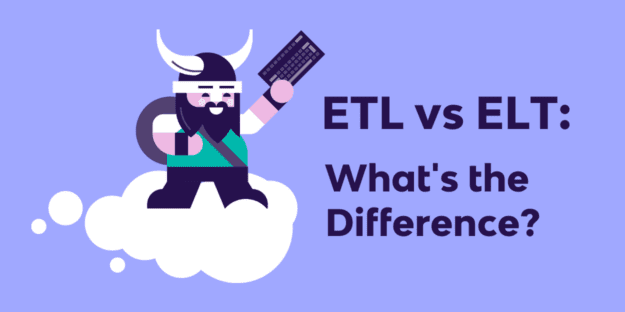Data is the backbone of all digital transformations. The crux of many digital transformations revolve around delivering the right data, at the right time, to the right stakeholders. But in order to accomplish this, many companies must overhaul their data operations. Here’s an overview of how to build a powerful and flexible data operation that will power your organization’s digital transformation.
The Killer Tech Stack: What Teams Need to Compete with the Best
In today’s digital landscape, companies often have difficulty centralizing, transforming, and operationalizing data. Most companies cannot manage their data effectively and efficiently, between online and offline databases, hundreds of data streams, data formatting requirements, and ever-growing volumes of data.
But three cloud-based data solutions – DataOps management platforms, cloud data warehouses, and business intelligence platforms – have changed this old paradigm. Here’s what companies should know about these technologies:
- DataOps management platform – Extract, aggregate, and transform all your company’s data sources in a single platform. With pre-built data connectors, ingest data from any data source, without requiring code. Migrate data from offline/on-premise databases into the cloud without interrupting database usage. Perform full data orchestration, including in-database transformations to prepare data for deployment. Send data to 3rd party platforms via reverse ETL.
- Cloud data warehouse – Eliminate the need for cumbersome on-premise servers and mainframes. Cloud data warehouses are infinitely scalable, maintenance-free platforms that store all of a company’s data in a single repository. Cloud DWHs operationalize data by pushing it out to stakeholders, business processes, and technologies throughout the organization.
- Business intelligence platform – A business intelligence platform allows companies to visualize data to make key decisions, track ROI across all initiatives, and generate business insights.
When combined into a single tech stack, these three cloud-based solutions form a powerful technological core for a digital transformation.
DataOps: The Data Framework for Winning
Organizations must harness flexible data frameworks to compete in the hyper-efficient market. That’s why many companies have turned to the DataOps framework. DataOps combines technology, processes, principles, and personnel into an agile framework that automates data orchestration throughout an organization.
DataOps is designed to streamline and quicken the end-to-end delivery of data and analytics to diverse organizational stakeholders, from executives, to marketers, to warehouse staff. By speeding up the development and deployment of automated data workflows, DataOps delivers high-quality, on-demand data to organizational customers. The key components of DataOps include:
- Agile development – Agile development breaks the software development cycle down into smaller increments, called “sprints,” that last anywhere from one to four weeks. DataOps applies agile development to data workflows, rather than to software products.
- DevOps – DevOps combines software development (Dev) with IT operations (Ops) to speed up time-to-launch for high-quality software. DataOps uses the principles of DevOps to automate the quick deployment of data infrastructure, such as data pipelines, built during the agile development phase.
- DataOps team – Key players for DataOps teams include executives (CDO/CTO), data stewards, data scientists, data engineers, BI analysts, and more.
- DataOps platform – With the right DataOps platform, teams can maximize the methods, principles, and personnel of the framework, and deliver data to stakeholders with rapidity and agility.
A framework such as DataOps is critical to ensuring the adaptability of a digital transformation in a fast-changing market.
The Data Foundation: Guaranteeing Long-Term Success
To achieve long-term success, a company must build out a strong data foundation for a digital transformation. Durable data infrastructure, processes, and practices can guarantee the longevity of a digital transformation, and provide a solid data backbone for future projects. Some key projects to consider include:
- Data governance – Develop the systems, rules, processes, and procedures to deliver data throughout an organization with consistency, security, and uniformity. Data governance ensures regulatory compliance, high data quality, auditing, consistency, and accuracy.
- Data lineage – Document the origins, movements, characteristics, and quality of data, including how data was changed to its final format. With data lineage, map data workflows as they grow throughout an organization, enabling error identification, audit trails, and operational intelligence.
- Data fabric – Manage the collection, integration, and sharing of data across a single unified architecture. This is key if a company uses a hybrid cloud/on-premise infrastructure.
These capabilities can all make a data operation sturdier, and lead to less digital overhauls in the long-run.
Strong Data Operation: The Key to a Digital Transformation
Data is the fuel that powers digital transformations. That’s why strong data operations are so critical. By combining cloud-based data stacks, the DataOps framework, and a strong data foundation, companies can build a data operation that offers not just speed and agility, but also longevity. This is the kind of data operation that companies can build their futures on.
But companies will need more than just a data operation to launch a digital transformation. Read our new eBook – Digital Transformation: 6 Steps for Success at Data-Driven Companies – to learn about the business process, technologies, educational initiatives, and other components a digital transformation needs to succeed.
Download our free eBook now!
Digital Transformation: 6 Steps for Success at Data-Driven Companies
Minimize the firefighting. Maximize ROI on pipelines.





